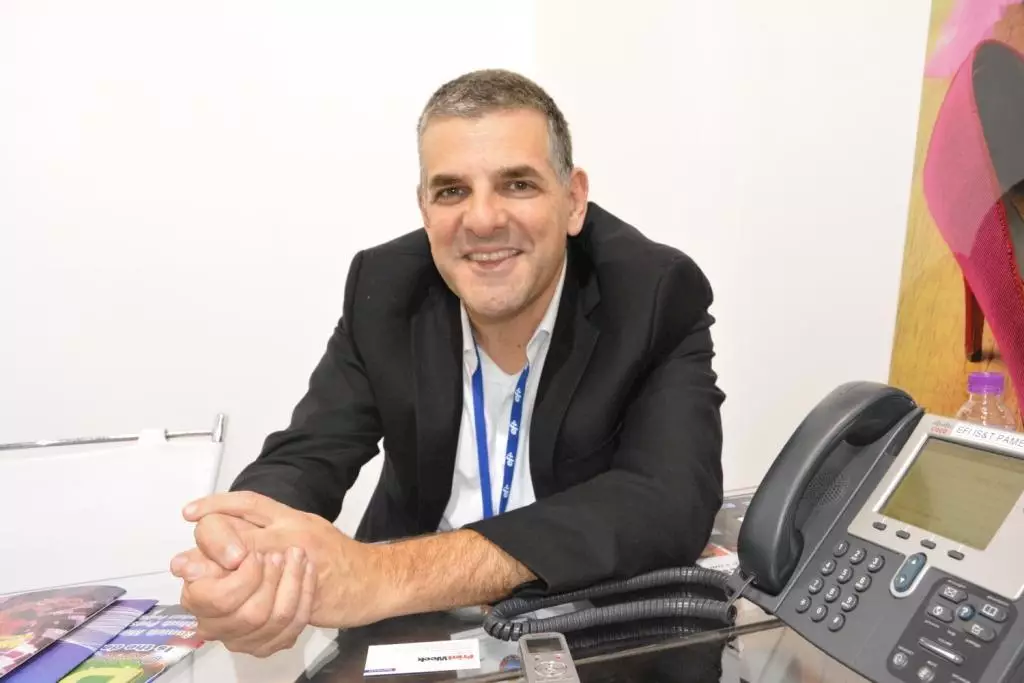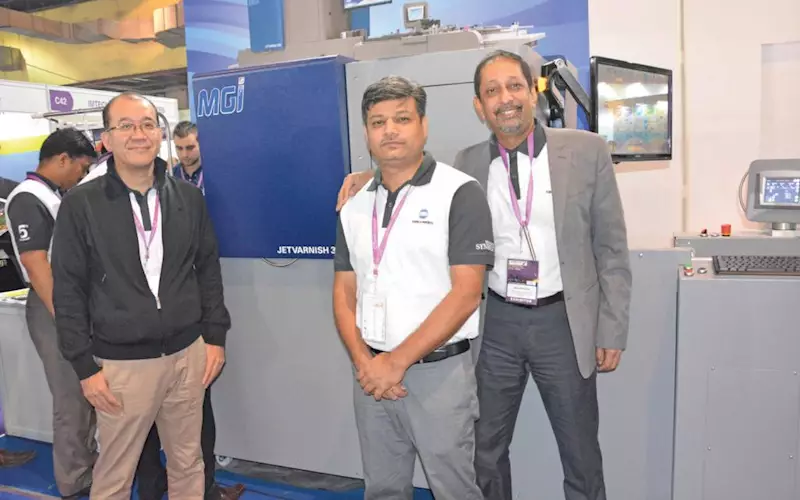From business to technology; from the today to the future, the ten best quotes from Pamex, held from 9 December to 12 December at the Bombay Exhibition Centre (BEC) in Mumbai. The show which co-chairman of Pamex, Tushar Dhote said, "... Had over 22,000 registered visitors and over 40,000 footfalls during the four days."
 Canon India’s Puneet Datta: “The market for digital printing in India is expanding, with increased penetration in tier-II and tier-III cities. Canon’s unique selling point has always been its direct service model. Our customers are guaranteed quality service directly from us and don’t need to rely on other intermediaries. The key to capitalising on the new avenues is ensuring affordability.”
Canon India’s Puneet Datta: “The market for digital printing in India is expanding, with increased penetration in tier-II and tier-III cities. Canon’s unique selling point has always been its direct service model. Our customers are guaranteed quality service directly from us and don’t need to rely on other intermediaries. The key to capitalising on the new avenues is ensuring affordability.”
 Guy Gecht @GuyGecht Dec 14
Guy Gecht @GuyGecht Dec 14: "With the @EFIPrint team at the #PAMEX show in Mumbai. Great to see the local Indian market embracing digital printing."
HP India’s A Appadurai: “The one mindset that the printers need to change about the digital technology is that of paying FSMA. The FSMA in place has more positives than negatives. For one, the FSMA gives an assured cost of production to the printer, instead of the cost structure varying basis the price of plates and inks and so on. Indian printers need to start adopting the digital technology to their benefit and offer services to their clients rather than mere print jobs.”
Flint Ink’s Upal Roy: “Flint Group is committed to India. India is one of the few areas where the print media market is still growing and that is the reason why we are committed to increasing our capacity in Vadodara in news ink. We are also investing in setting up a state-of-the-art blanket converting facility in Vadodara in 2016. We believe that this will help differentiate Flint from competitions.”
IIT Kanpur’s Ashutosh Tripathi: “Printed electronics is the future. The advantages are many, including like low production cost, easy to pattern and increased speed. It provides flexibility in terms of size and shape, thanks to the flexible substrate used here. The electronic market in 2027 is guesstimated to be USD 330 billion, a reason why one should not miss the opportunity that the technology provides.”
Konica Minolta’s V Balakrishnan: “We have notched up close to 300 installations during 2015. According to our estimates, about 30-40% of the photo albums are created using our engines. We have more than 400 printing presses.”
Provin Technos’ Vinay Kaushal: “It’s been a solid nine months for us. We have installed 19 Ryobis so far, and I am talking in terms of numbers of machines arrived and installed. By March 2016, we expect to take the number to 25 machines. We attribute the success of the Ryobi presses in India to a good product range, competitive pricing, and aggressive marketing.”
TechNova Imaging Systems’ C G Ramakrishnan: “It is unclear whether Make in India means that a multinational should be manufacturing in India and selling in India or India should manufacture to sell overseas. According to me, if the Indians are to benefit from this, the campaign should mean Make in India, Make for India and global market, and Made by India plus MNCs.”
 Welbound Worldwide’s Sajith Pallippuram:
Welbound Worldwide’s Sajith Pallippuram: “Considering the objective of the national manufacturing policy of creating 100 million jobs and enhancing the share of manufacturing in the GDP to 25%, there is little that the Indian manufacturers like us - Welbound, Autoprint, TechNova, Line O Matic, APL Machinery, or Indian printers who export, can do.”
Xerox India’s Balaji Rajagopalan: “We have already installed more than 100 units of C60/70 alone in 2015 and hope to replicate the success with all our other devices.”
 Canon India’s Puneet Datta: “The market for digital printing in India is expanding, with increased penetration in tier-II and tier-III cities. Canon’s unique selling point has always been its direct service model. Our customers are guaranteed quality service directly from us and don’t need to rely on other intermediaries. The key to capitalising on the new avenues is ensuring affordability.”
Canon India’s Puneet Datta: “The market for digital printing in India is expanding, with increased penetration in tier-II and tier-III cities. Canon’s unique selling point has always been its direct service model. Our customers are guaranteed quality service directly from us and don’t need to rely on other intermediaries. The key to capitalising on the new avenues is ensuring affordability.” Guy Gecht @GuyGecht Dec 14: "With the @EFIPrint team at the #PAMEX show in Mumbai. Great to see the local Indian market embracing digital printing."
Guy Gecht @GuyGecht Dec 14: "With the @EFIPrint team at the #PAMEX show in Mumbai. Great to see the local Indian market embracing digital printing." Welbound Worldwide’s Sajith Pallippuram: “Considering the objective of the national manufacturing policy of creating 100 million jobs and enhancing the share of manufacturing in the GDP to 25%, there is little that the Indian manufacturers like us - Welbound, Autoprint, TechNova, Line O Matic, APL Machinery, or Indian printers who export, can do.”
Welbound Worldwide’s Sajith Pallippuram: “Considering the objective of the national manufacturing policy of creating 100 million jobs and enhancing the share of manufacturing in the GDP to 25%, there is little that the Indian manufacturers like us - Welbound, Autoprint, TechNova, Line O Matic, APL Machinery, or Indian printers who export, can do.”










 See All
See All